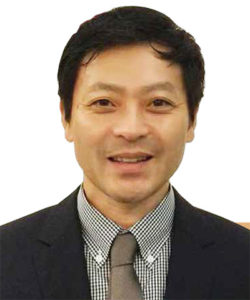Face to Face: Mr. J.D. Kasamoto
 Interview with Mr. J.D. Kasamoto, General Manager of the Service and Environment Division at Ricoh Asia Pacific. In his current role, he oversees 10 countries in the Asia Pacific region, supporting these countries on the service and environmental directions and enhancement efforts.
Interview with Mr. J.D. Kasamoto, General Manager of the Service and Environment Division at Ricoh Asia Pacific. In his current role, he oversees 10 countries in the Asia Pacific region, supporting these countries on the service and environmental directions and enhancement efforts.
Emerging technologies can transform industries to make them more efficient, profitable and sustainable. Which emerging technology do you favor and why?
Both innovation and technology play critical roles in enhancing efficiency and sustainability. With sustainability in mind, Ricoh has developed a wide range of technologies that minimize our impact to the environment. One of these is our Biomass Plastic Technology which supports low carbon emission and promotes recycling. This allows us to manufacture biomass plastic from raw materials such as starch, sugar or cellulose contained in plants, which is applied to our interior components of our multifunction copiers.
The use of biomass plastics is highly advantageous as it is of regenerable biological origin and is environmentally friendly. Using this technology, Ricoh has also created a lighter multifunctional full-color digital copier. Made of recycled and biomass plastic, these copiers are 65% lighter than previous models.
Ricoh has also engaged in initiatives that create new value from waste discharge. At our Eco Business Development Centre in Gotemba City, we’ve started a project that extracts oil from bottle caps collected by residents. Complex plastic, metals and other valuables are also collected through thermal decomposition using an electric oven, converting these materials to oil. In Asia, Ricoh encourages our partners to participate in recycling their copier cartridges, targeting an 80% recycle rate. The centre in GotembaCity alone collects 3000 tonnes of copier cartridges and toner bottles per year. By adopting the circular economy approach, we leverage on innovation and technology to generate a positive impact on the environment.
At Ricoh, products are also designed with recycling and reuse in mind. In 2009, our first refurbished full-color copier was released, promoting resource conservation through a full list of design considerations. By incorporating recycle design such as the recyclability of the copier’s high-quality materials, grading of plastic molding parts and reduction in packaging material, Ricoh ensures that sustainability remains part of the core design process. Besides emphasis on recycling, we also developed technologies to aid in the reduction of waste. One such technology is Ricoh’s Rewritable Laser System, resulting in the prevention of large amounts of paper waste. By creating a rewriteable label, returnable containers with this label can be reused, reducing unnecessary replace ment of labels. At Coop Tohoku Sunnet Foundation, the adoption of Ricoh’s Rewritable Laser System led to an 80% reduction in CO2 emissions, and 90% reduction in waste paper labels.
How has Ricoh embraced the Year of Climate Action?




